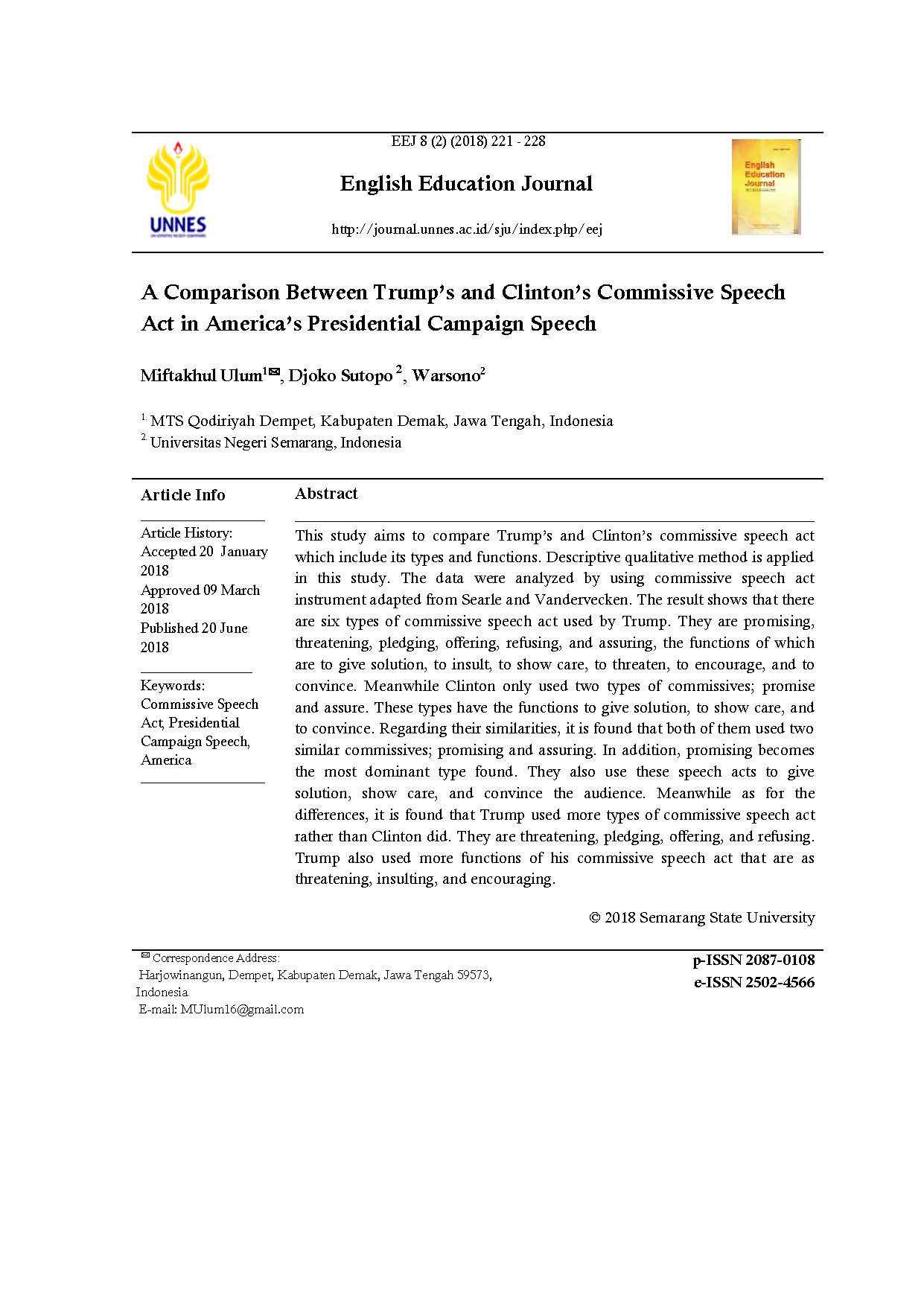A Comparison Between Trump’s and Clinton’s Commissive Speech Act in America’s Presidential Campaign Speech
##plugins.themes.academic_pro.article.main##
Abstract
This study aims to compare Trump’s and Clinton’s commissive speech act which include its types and functions. Descriptive qualitative method is applied in this study. The data were analyzed by using commissive speech act instrument adapted from Searle and Vandervecken. The result shows that there are six types of commissive speech act used by Trump. They are promising, threatening, pledging, offering, refusing, and assuring, the functions of which are to give solution, to insult, to show care, to threaten, to encourage, and to convince. Meanwhile Clinton only used two types of commissives; promise and assure. These types have the functions to give solution, to show care, and to convince. Regarding their similarities, it is found that both of them used two similar commissives; promising and assuring. In addition, promising becomes the most dominant type found. They also use these speech acts to give solution, show care, and convince the audience. Meanwhile as for the differences, it is found that Trump used more types of commissive speech act rather than Clinton did. They are threatening, pledging, offering, and refusing. Trump also used more functions of his commissive speech act that are as threatening, insulting, and encouraging.
